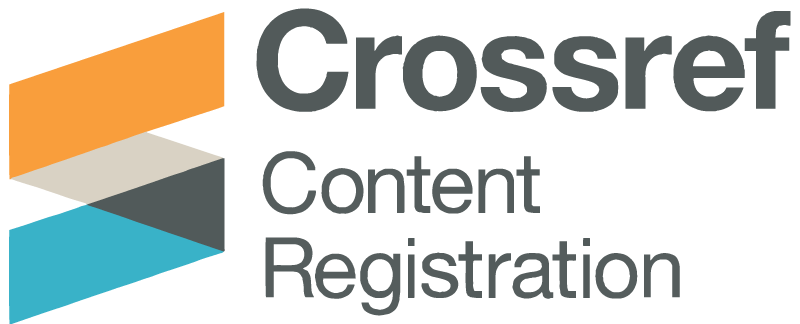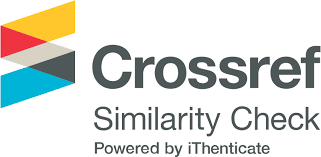Risk Assessment of Heavy Metals in the Drinking Water Source and Marine Benthic from Tobruk Coastline
Case Study : The Port and Gulf of Tobruk - Libya)
DOI:
https://doi.org/10.64516/m33grs11Keywords:
Heavy Metals, Spectrophotometer, Tobruk portAbstract
Coastal areas provide several important benefits to human beings in terms of foodstuff resources and ecology amenities. The human beings activities may have significant adverse effects on the ecosystems health and the sustainability of resources. The heavy metal contamination has become a serious problem in the aquatic environment, including marine sediments. The increased exposure of Tobruk port to liquid waste coming from the ground, oil change stations and marine barges carrying crude oil to and from this city may make it one of the most polluted areas as a result of this negative impact. Liquid waste is one of the main sources of heavy metal pollutants. Tobruk f harbour is one of the most polluted areas due to the adverse effect of effluents from land-based sources. The aim of this study was analyzing the content of heavy metals in seawater, then assessing and evaluating the level of heavy metal contamination its ecological risks. The present study investigated the concentrations of K, Na, and Cd in seawater of Tobruk fishing harbour and surrounding area. The study also identified the major properties of the seawater PH. fifteen sampling stations were selected to conduct the study in Tobruk harbour surrounding area. The samples were taken from the study stations at month from September of 2021 . The samples were taken in September. All metals were determined and analyzed by Flame Atomic Absorption Spectrophotometer in for Cd, and for Na and K were determined by using JENWAY Flame Photometer PFP7 modeled in laboratory of Tobruk – Libya.
References
1. Wang, X.C.; Feng, H.; Ma, H.Q. (2007). Assessment of Metal Contamination in Surface Sediments of Jiaozhou Bay, Qingdao, China. Clean 35(1), pp: 62-70.
2. Spencer K.L. and MacLeod C.L. (2002). Distribution and partitioning of heavy metals in estuarine sediment cores and implications for the use of sediment quality standards. Hydrology and Earth Sciences, 6(6), pp: 989-998.
3. Davies, C.A.; Tomlinson, K.; Stephenson, T. (1991). Heavy metals in River Tees estuary sediments. Environ Technology (12), pp: 961–972.
4. Etim, L.; Akpan, E.R.; Muller, P. (1991). Temporal Trends in Heavy Metal Concentrations in the Clam E. radiata (Bivalvia: Tellinacea Donacidae) from the CrossRiver, Nigeria. In Review of Tropical Hydrobiology 24 (4) pp: 327-333.
5. PRB’s Middle East and North Africa (MENA) program, 2001
6. Goldberg, E. (1992). Marine metal pollutants: a small set. Mar. Pollut. Bull. 25, pp: 45-47.
7. Kim, K.T.; Kim, E.S.; Cho, S.R.; Park, J.K.; Rack, T.; Lee, J.M. (2011). Distribution of Heavy Metals in the Environmental Samples of the Saemangeum Coastal Area, Korea. Coastal Environmental and Ecosystem Issues of the East China Sea, Eds., A. Ishimatsu and H.-J. Lie, pp: 71–90.
8. Hester, R.E. and Harisson, R.M. (2000). Chemistry in the Marine Environment. The Royal Society of Chemistry, Cambridge, UK.
9. Tam NFY, Wong YS (2000). Spatial Variation of Heavy Metals inSurface Sediments of Hong Kong Mangrove Swamps. Environ.Pollut., 100(2): 195-205.
10. Erdoğrul, Ö. and Erbilir, F. 2007. Heavy metal and trace elements in various fish samples from Sır Dam Lake, Kahramanmaraş, Turkey. Environmental Monitoring and Assessment, 130: 373-379.
11. Jefferies, D.J. and Firestone, P. 1984. Chemical analysis of some coarse fish from a Suffolk River carried out as part of the preparation for the first release of captivebred otters. Journal of Otter Trust, 1(18):17-22.
12. Freedman, B. 1989. The impact of pollution and other stresses on ecosystem structure and function. Academic Press, London.
13. Singh, B.R. and Steinnes, E. 1994. Soil and water contamination by heavy metals. In R. LAl and B. A. Stewart (Eds.) Soil processes and water quality. Lewis, Boca Raton, Florida. pp: 233-272.
14. Kumar Singh, R., Chavan, S.L. and Sapkale, P.H. 2007. Heavy metal concentrations in water, sediments and body tissues of red worm (Tubifex sp.) collected from natural habitats in Mumbai, India, Environmental Monitoring and Assessment, 129: 471-481.
15. hen, G.T., Boyle, E.A., 1987. Lead in corals: reconstruction of historical industrial fluxes to the surface ocean. Earth Planetary Science Letters82, 289–304.
16. Helen LE, Othman OC (2014). Levels of selected heavy metals in soil, tomatoes, and selected vegetables from Lushoto district-Tanzania. International Journal of Environmental Monitoring and Analysis 2: 313-9.
17. Yim, W.W.S. and Phillips, D.J.H. (1981). A comparative evaluation of oysters, mussels and sediments as indicators of trace metals in Hong Kong waters. Mar. Ecol. Prog. Ser 6 , pp.285-293.
18. WHO (2001) Environmental Health Criteria No. 221: Zinc, World Health Organization, Geneva.
19. Owen, RB. And Sandhu, N. (2000). Heavy metal accumulation and anthropogenic impacts on Tolo Harbor, Hong Kong. Mar Pollut Bull 40(9):174-890.
Downloads
Published
Issue
Section
License
Copyright (c) 2025 Abdrabba . I. Hassan, Algathafi R A Eisay, Almabrouk M Almabrouk, Azaldin.A.Altahr.Allafi (Author)

This work is licensed under a Creative Commons Attribution 4.0 International License.













